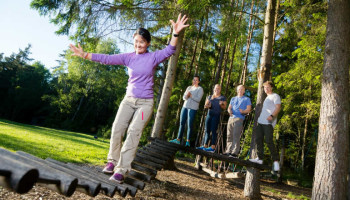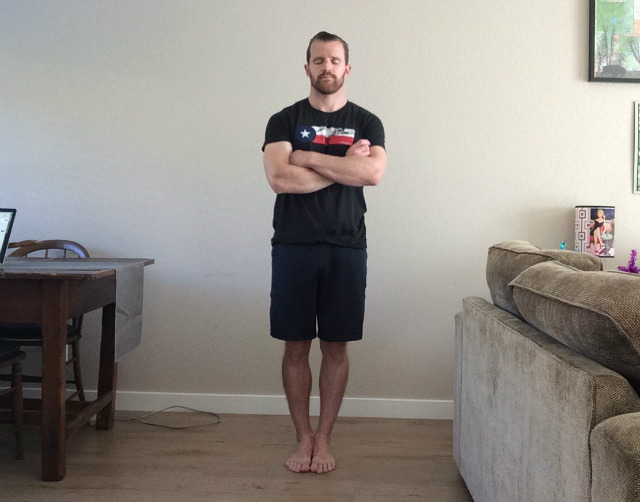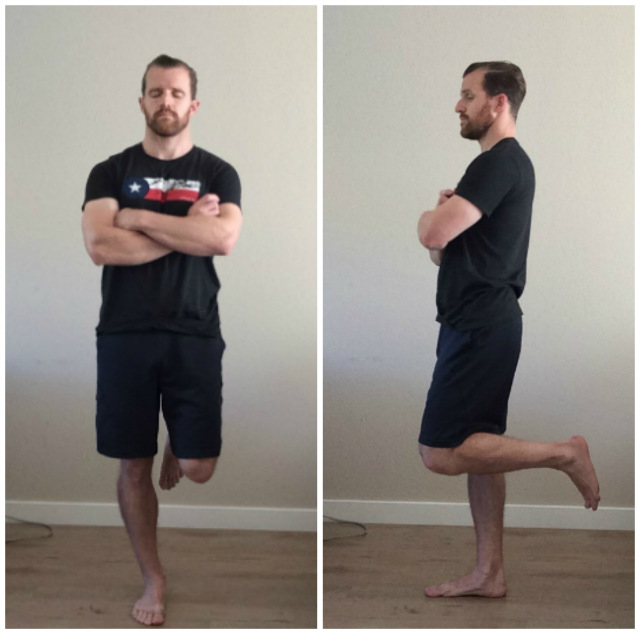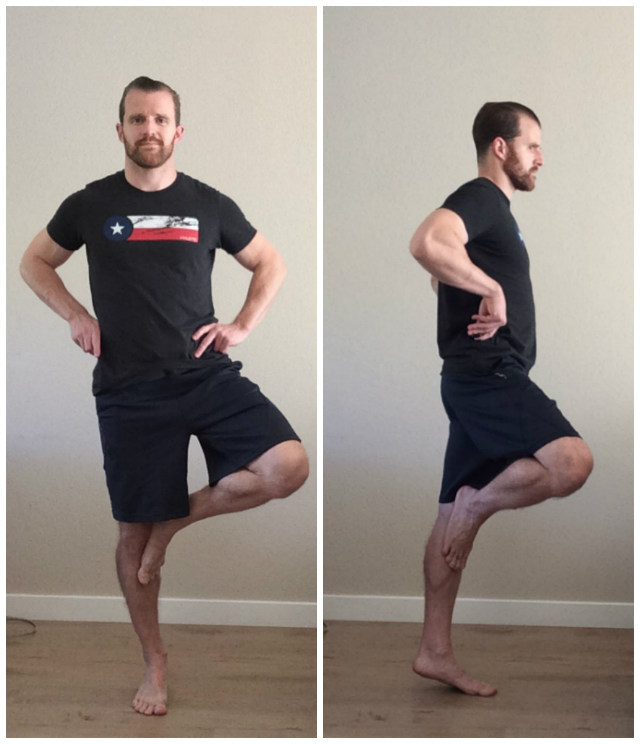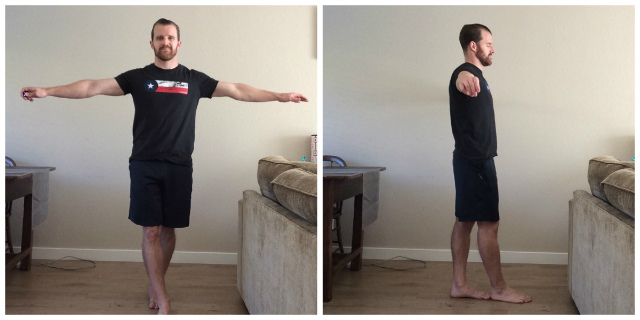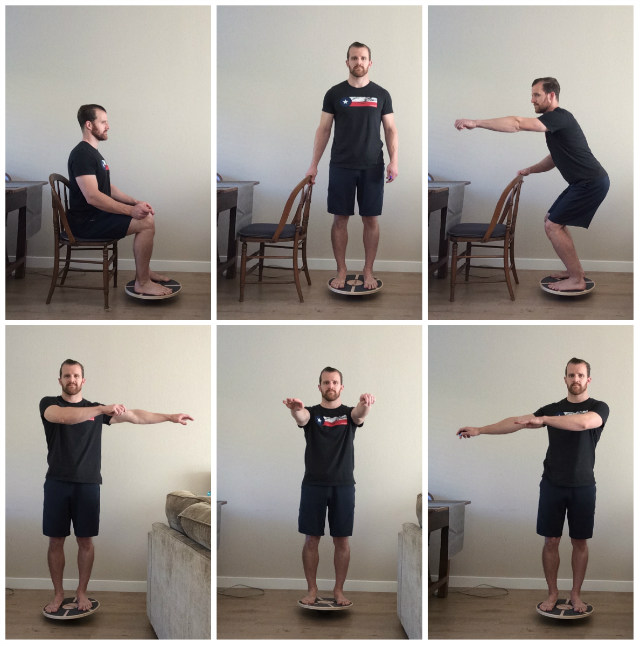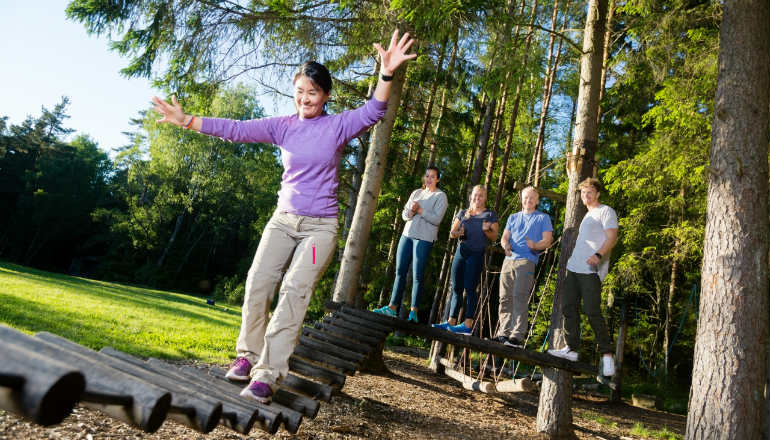 Reading Time: 7 minutes
Reading Time: 7 minutesBalance is something crucial to our safety in life, yet it is one of those things we take for granted in our youth. And even as we reach the age of 40 and beyond, it still often doesn’t get a lot of attention.
Like most things related to our bodies, it is easier to maintain a skill than it is to build it back up after having lost it. Balance is a perfect example of the concept of “use it or lose it.” But losing our balance is a dangerous proposition when you consider how vulnerable that leaves us to injury from a fall as we get older.
Like strength and flexibility, balance is its own system within our body. While balance is linked with our strength and flexibility, it has its own training requirements. Which means the good news is that our body’s sense of balance and stability can be built up on its own through regular application of a few basic exercises.
In this article, I’m going to show you how to assess your balance and give you my top three exercises for balance training. The great thing about these exercises is that they require little to no equipment, you can do them as frequently as you like, and like eating your spinach, the good they will do for you has myriad benefits.
First: Assess Your Balance
Before we get to the exercises, we need to find out how adequate your current balance is. Here are three tests you can perform on your own.
Balance Test 1
On both feet:
- Stand with your feet together and your ankle bones touching.
- Cross your arms and close your eyes.
- Try to hold this position for as long as you can.
A healthy standard is to be able to hold this position for 60 seconds. If you can do that, then you’re well on your way to establishing a solid foundation to build on.
Balance Test 2
On one foot:
- Stand on one foot and bend your other knee to lift the non-supporting foot off the ground without touching the standing leg. (You should do this next to a wall or in a doorway, so you can support yourself if needed.)
- Close your eyes.
- Try to hold this position for as long as you can.
As a baseline for comparison, people age sixty and younger should be able to hold this pose for 29 seconds with their eyes open and 21 seconds with their eyes closed to be considered healthy. People who are 61 and older should be able to hold the pose for 22 seconds with their eyes open and 10 seconds with their eyes closed. Anything less and there’s room for improvement.
Balance Test 3
On the ball of the foot:
- Stand on one foot with your hands on your hips.
- Place your non-supporting foot against the inside of the knee of your supporting leg.
- Raise your heel off the ground and hold the pose for as long as you can.
A good threshold to aim for on this pose is to be able to hold it for 25 seconds on each leg.
Okay, so you’ve done the tests and perhaps realized your balance is not as robust as you might’ve hoped. What do you do next? Don’t worry, this is the part where I teach you several exercises that you can use to build up your balance and stability.
Exercise 1: Walk Heel to Toe
This is the same drill as the sobriety test cops give to drivers. But, it turns out it’s also an easy way to help improve your balance.
How to do it:
- Begin by taking twenty steps forward, heel to toe.
- Then take twenty steps walking backward.
- You can use your arms to help maintain your balance.
This exercise is simple, effective, and can be done anywhere. I recommend you do this several times throughout your day.
Exercise 2: Balance on One Foot
You can do this exercise anywhere and at any time since there is no equipment required. In fact, I often tell my clients to do this one while doing the dishes. If you have to stand in one place anyway, why not get in some balance work?
How to do it:
- Stand on one foot.
- That’s it (but I’ll warn you it’s not necessarily as easy as it sounds).
If this is really difficult at first, follow this progression to build up your stamina:
- Begin by holding onto a wall, countertop, or chair with two hands.
- When that feels easy, try using only one hand.
- Work up to balancing on each foot for 20-30 seconds without any support and when that feels solid, then try a more unstable surface such as a couch cushion for more of a challenge.
If you’re looking for an additional challenge, try standing on one foot with your eyes closed. Closing your eyes will allow you to experience the details of what your body is doing to try to maintain its balance. You’ll gain a new perspective on the firing of the different muscles in your feet, legs, and core.
Exercise 3: Balance on a Wobble Board
A wobble board is a great way to train your balance and reflexes, and it’s an easily portable and storable piece of equipment that you can use at home or the office.
Here are a number of exercises you can do on the board. They begin with the easiest and progress to more difficult:
- Sit down in a chair and place the wobble board under your feet and slowly rotate it a number of times in each direction. This will begin to work on improving your ankle range of motion and control.
- Stand on the wobble board, feet shoulder-width apart. Hold on to a chair for support if needed and rock the board forward and backward, then side to side. Work on this for 2 to 3 minutes.
- Stand on the wobble board, feet shoulder-width apart. Rotate the wobble board around so the edge of the board is in contact with the floor at all times. Work on this for 2 to 3 minutes.
- Balance on the wobble board for as long as you can without the edges touching the floor. Try to do this for a minimum of 2 minutes.
- Rotate the wobble board in a circle, but do not allow the edge of the board to touch the floor. Build up to a minimum of 2 minutes.
- While balancing on the board with both feet, perform small knee bends to challenge your balance. Gradually bend your knees further into a squat.
- Still balancing with both feet, reach both arms out in front of you. Rotate your upper body around slowly from side to side.
- Balancing with both feet, throw a ball against a wall and catch it on its return. You can also do this with a partner.
Once you become proficient with all these wobble board exercises, the next step is to perform some of them with your eyes closed. Obviously, throwing a ball against the wall with your eyes closed isn’t a good idea, but we can assume someone out there needs it to be said. Don’t do it.
You can also build upon these exercises by trying them on one foot at a time. Just make sure to use a wall when trying this until you get your bearings. Work on building up to a minimum time of 1 minute per leg.
Shift Your Focus to Balance Training
In my fitness journey, I’ve learned that as we get older our emphasis changes. We still need to work on basic strength and conditioning, but to maintain our quality of life and healthy activity, we also need to include more accessory work than we might have in our twenties and thirties. Focusing on elements such as balance becomes not just preferable but necessary to ensure a long, pain-free, and enjoyable life.
